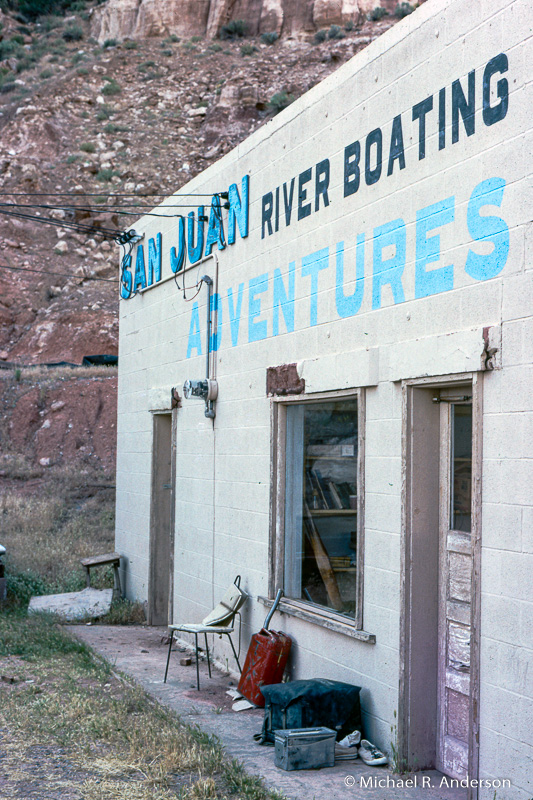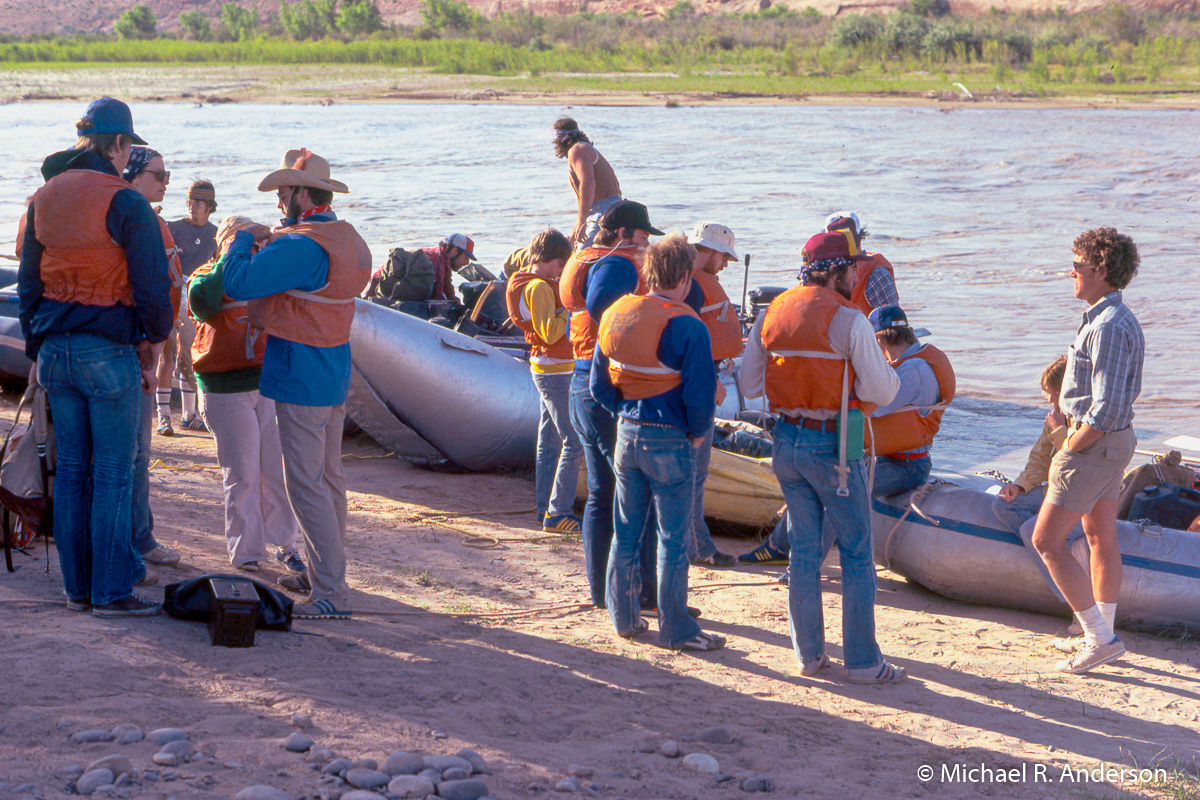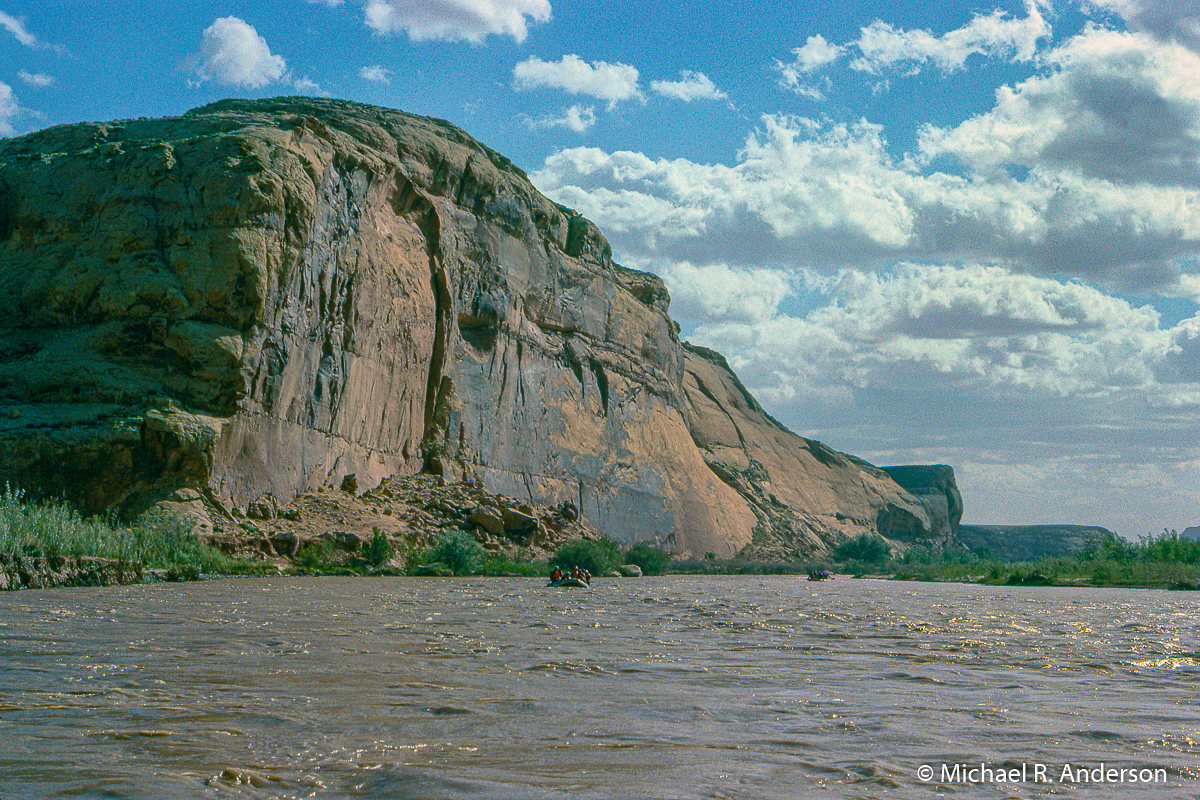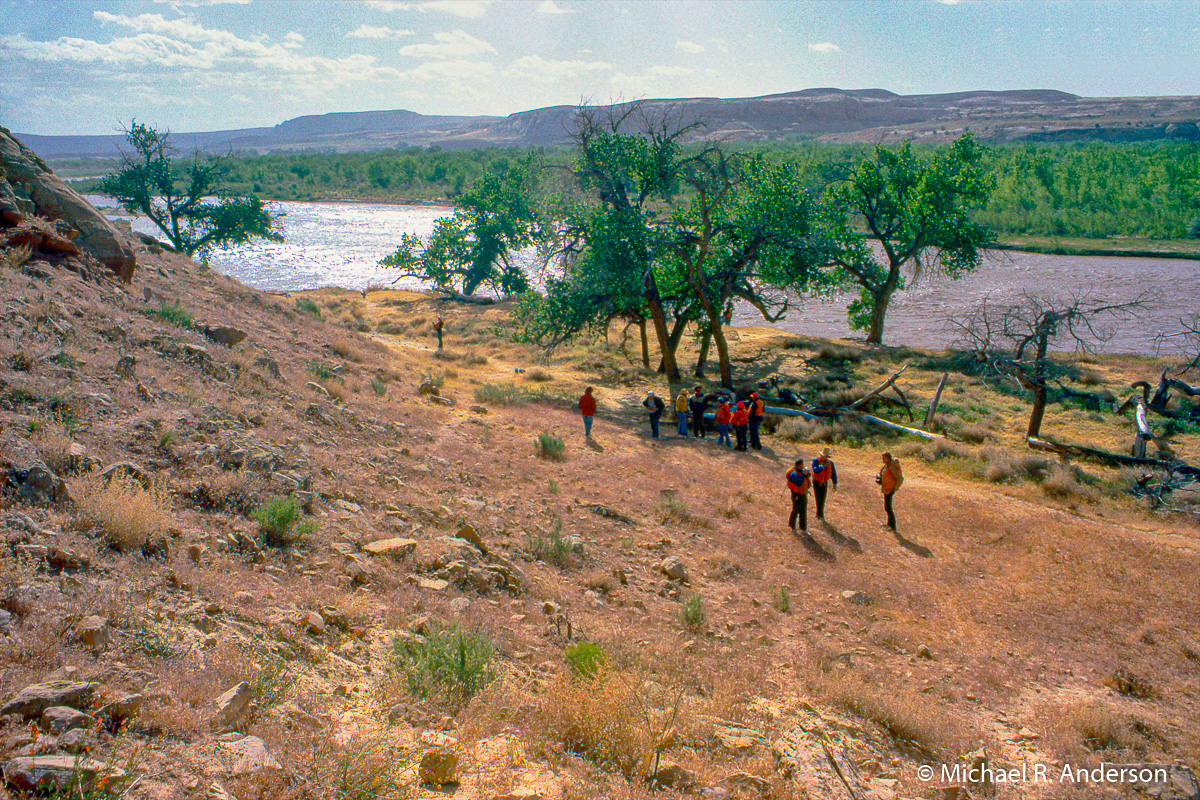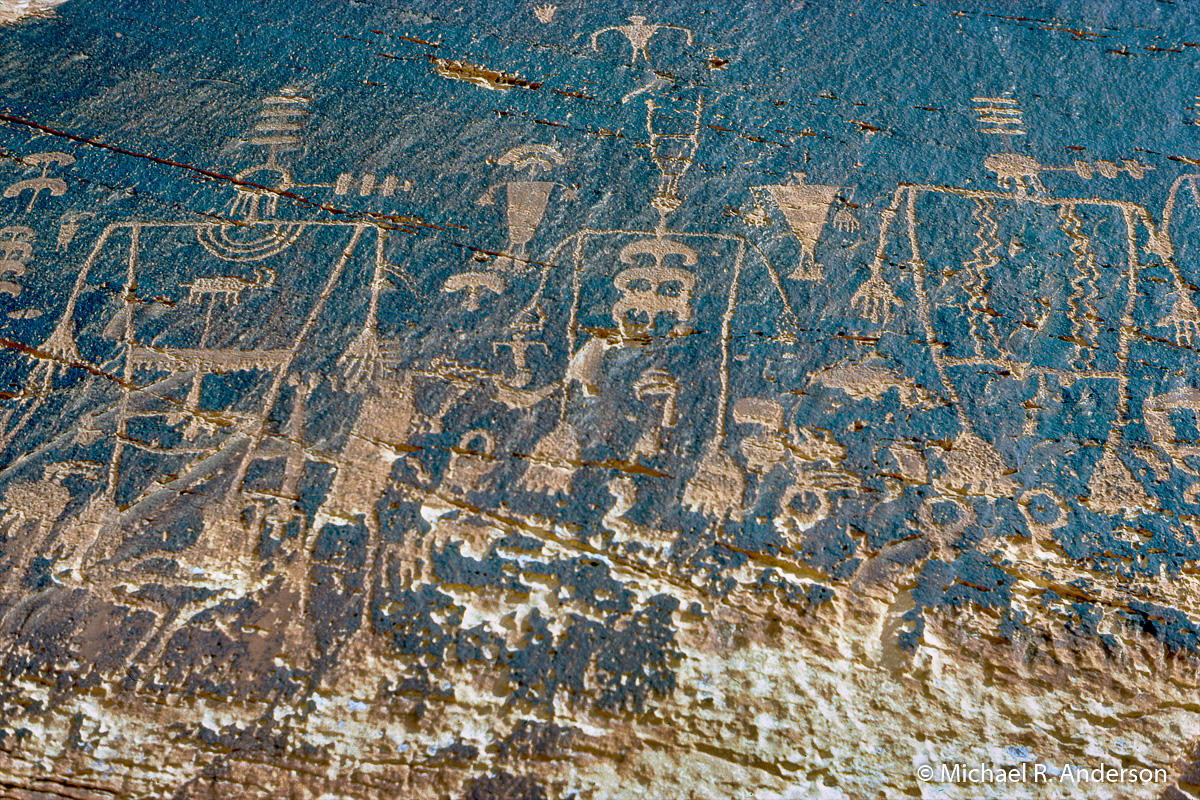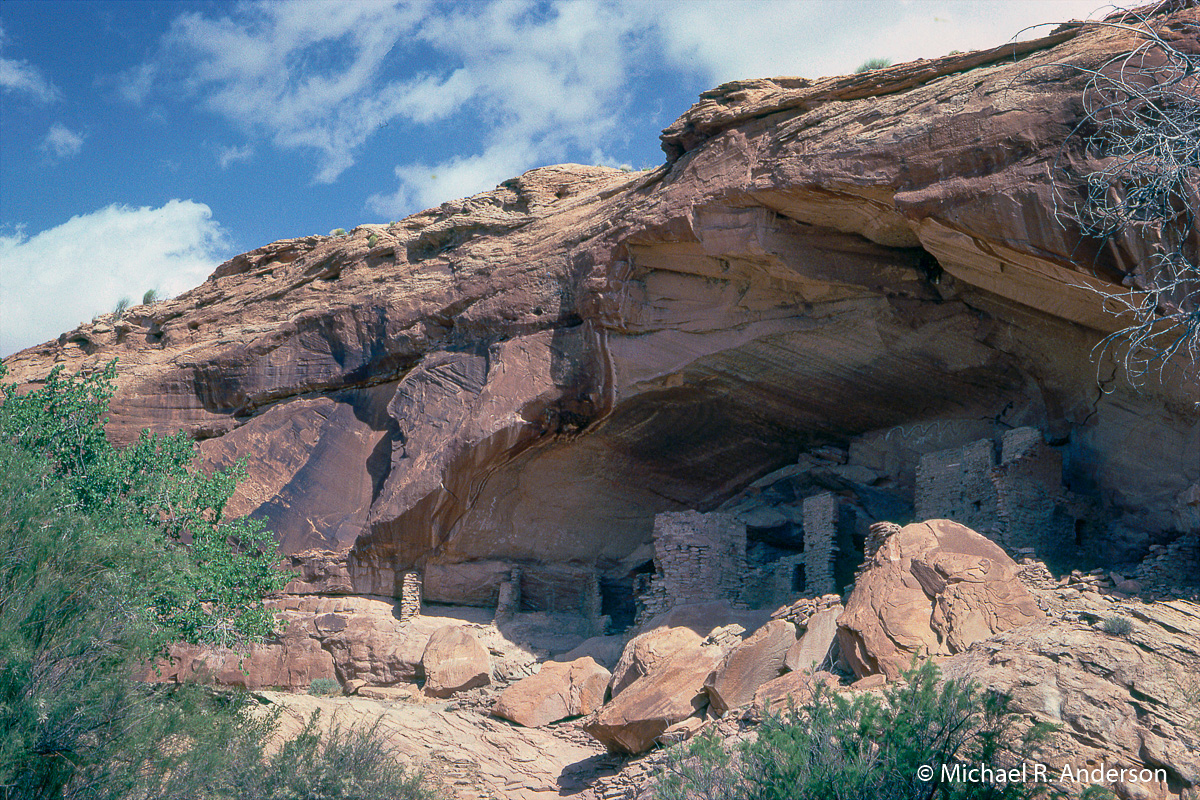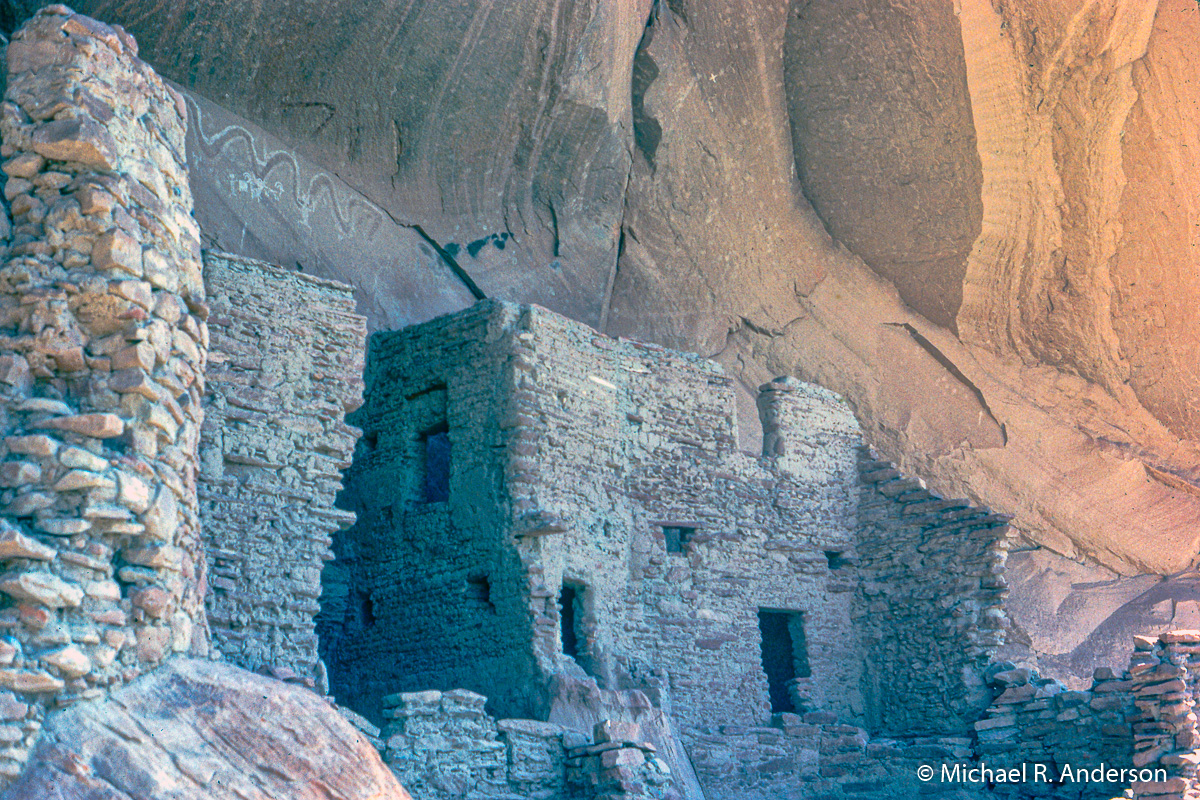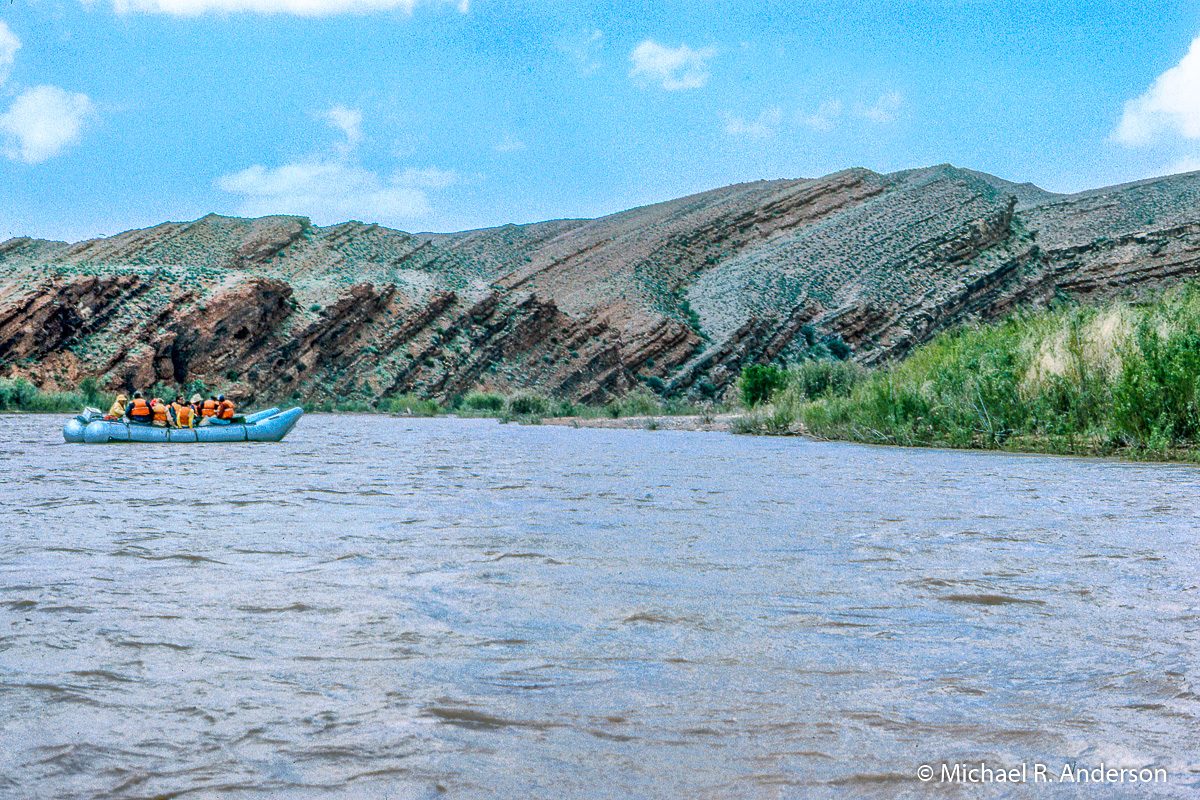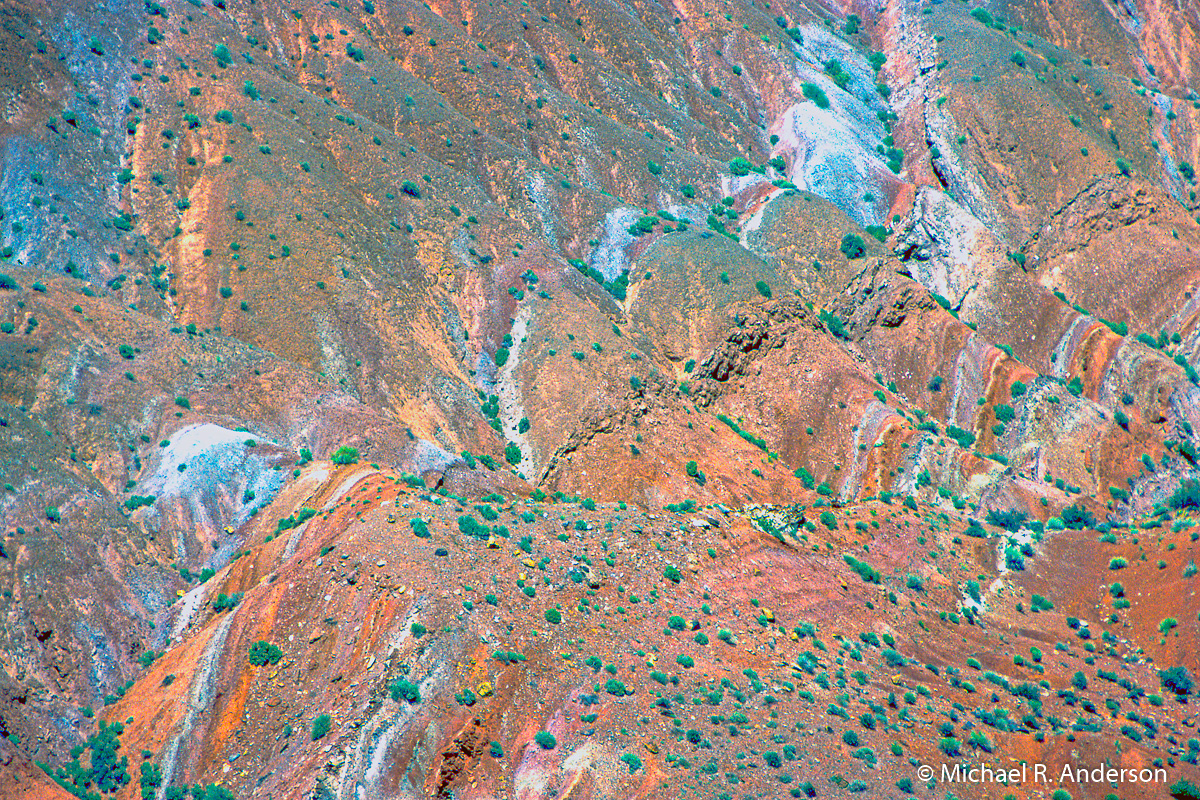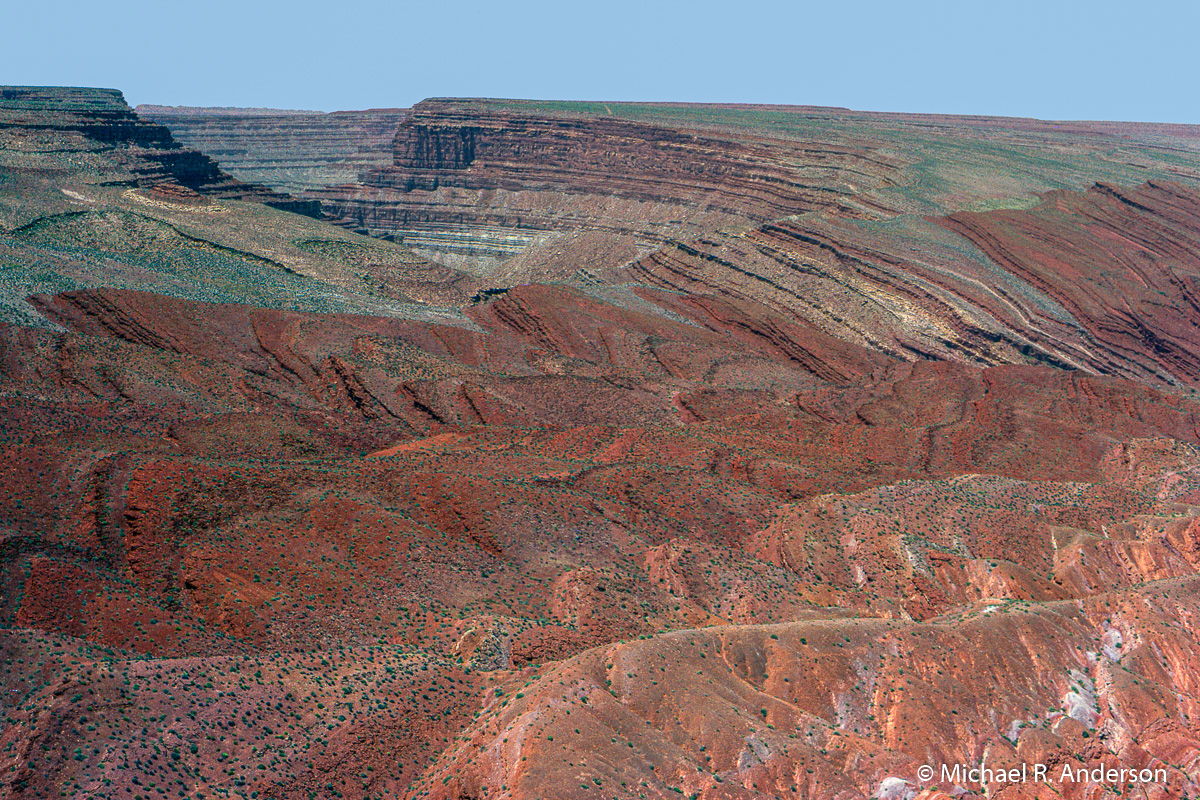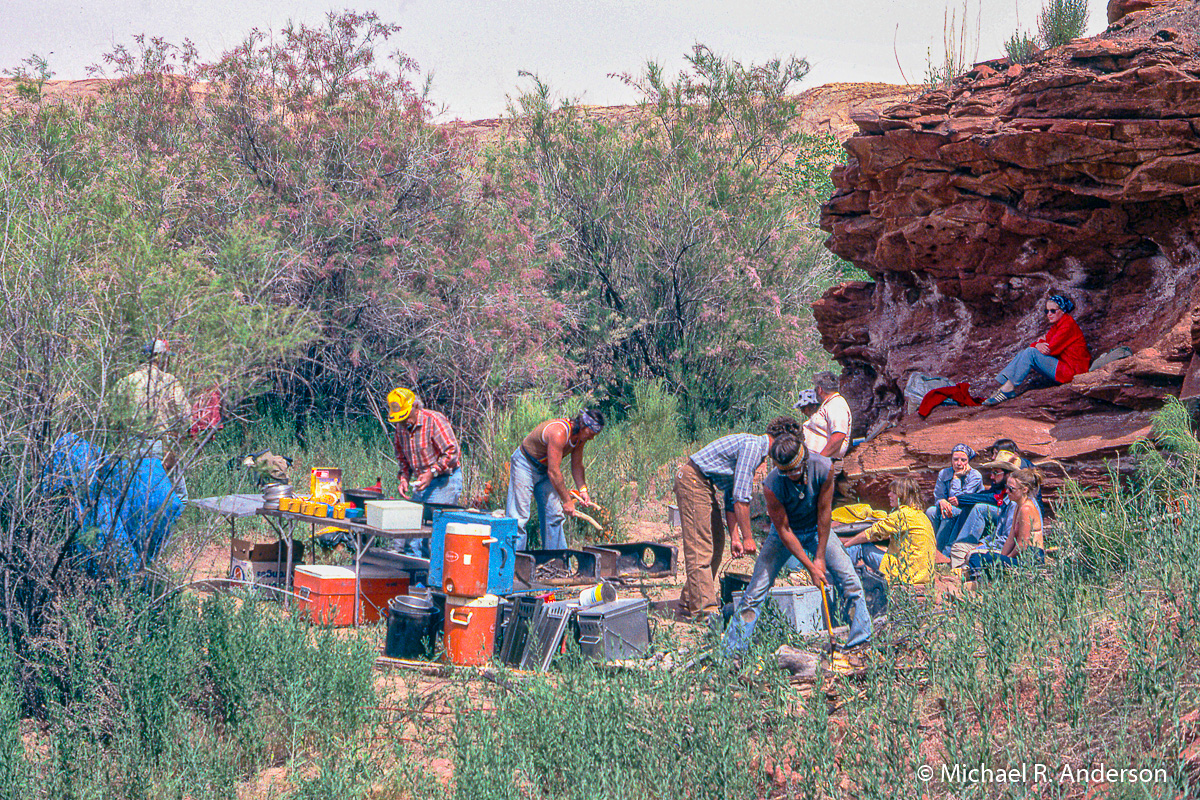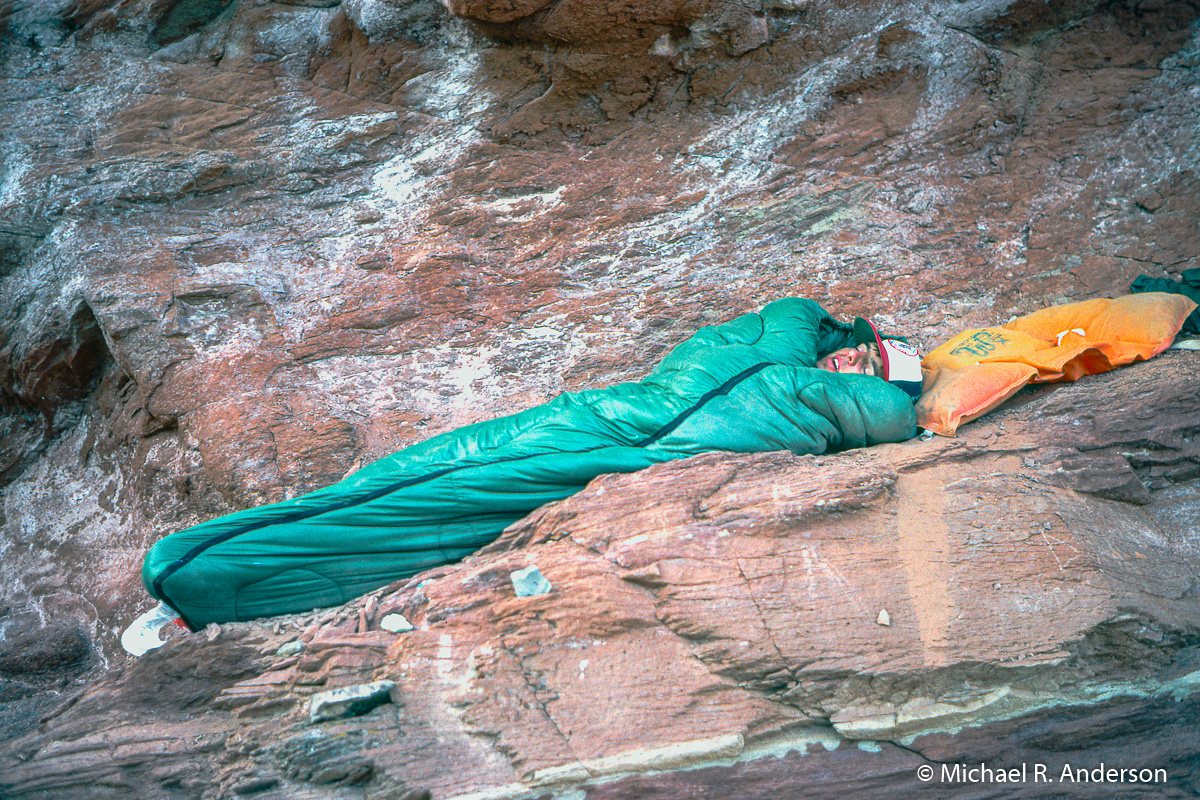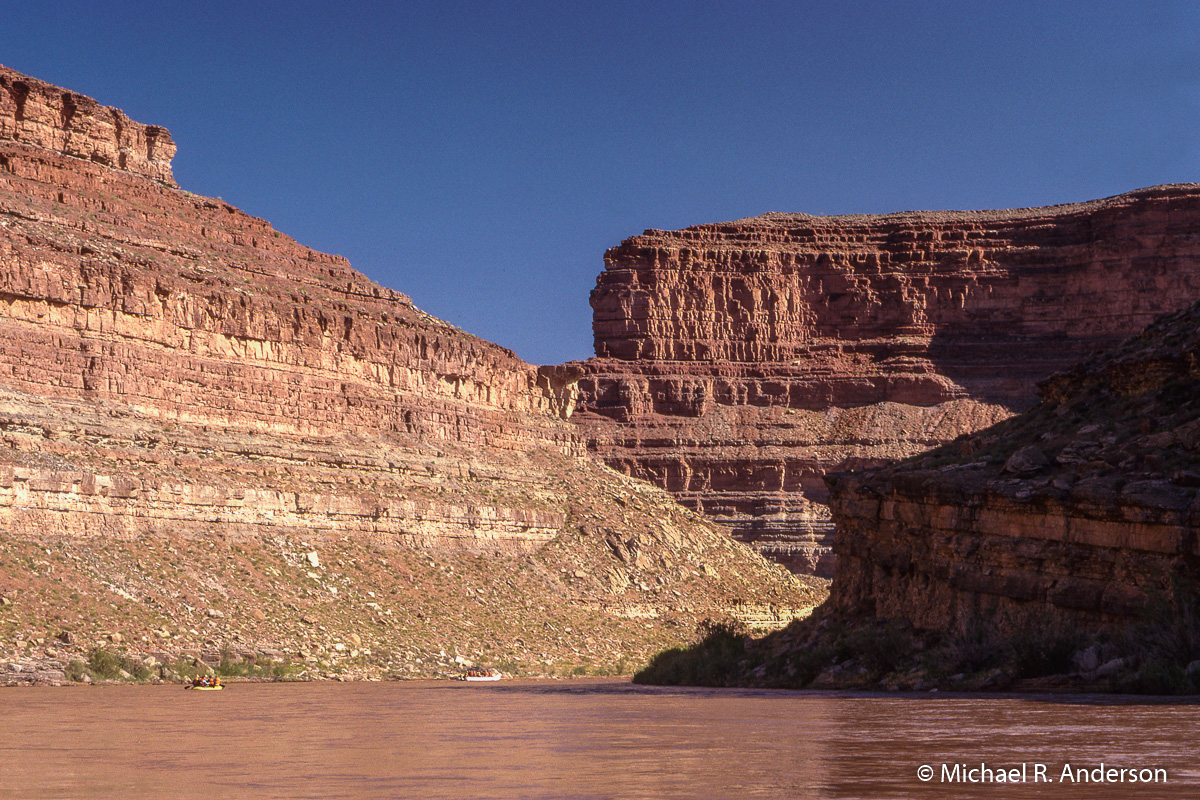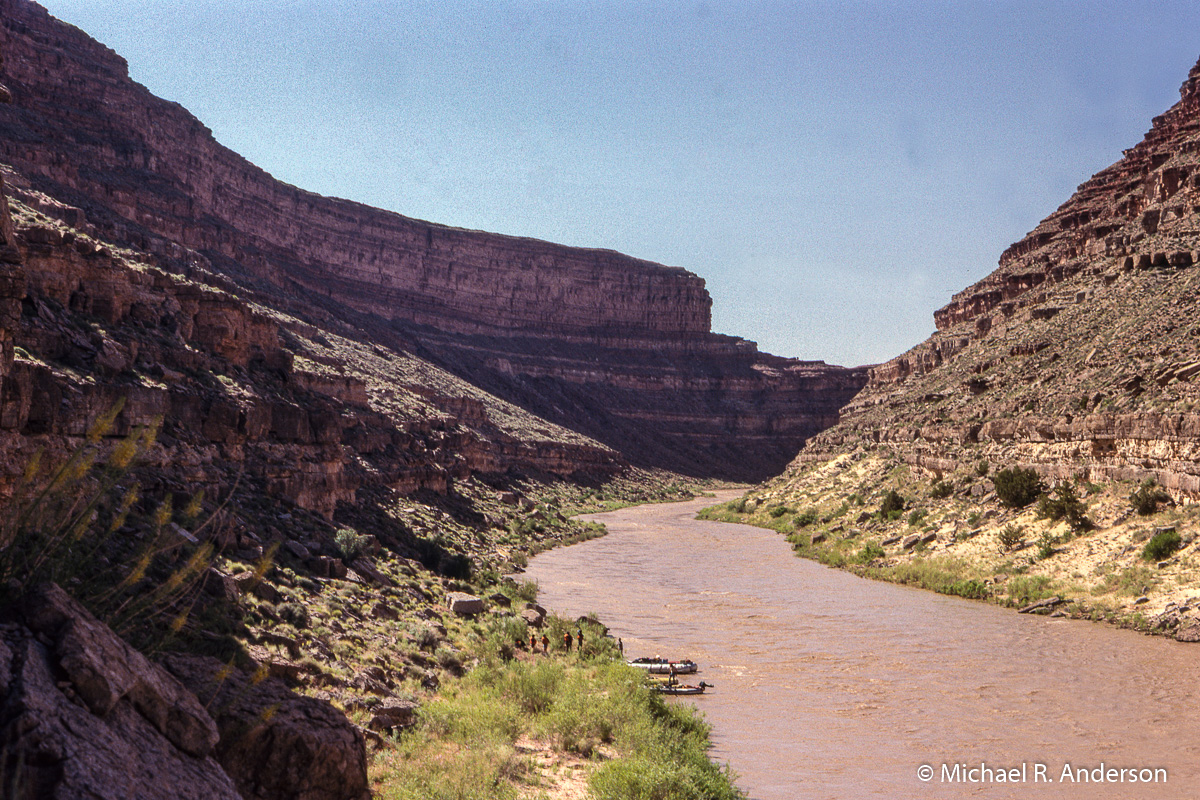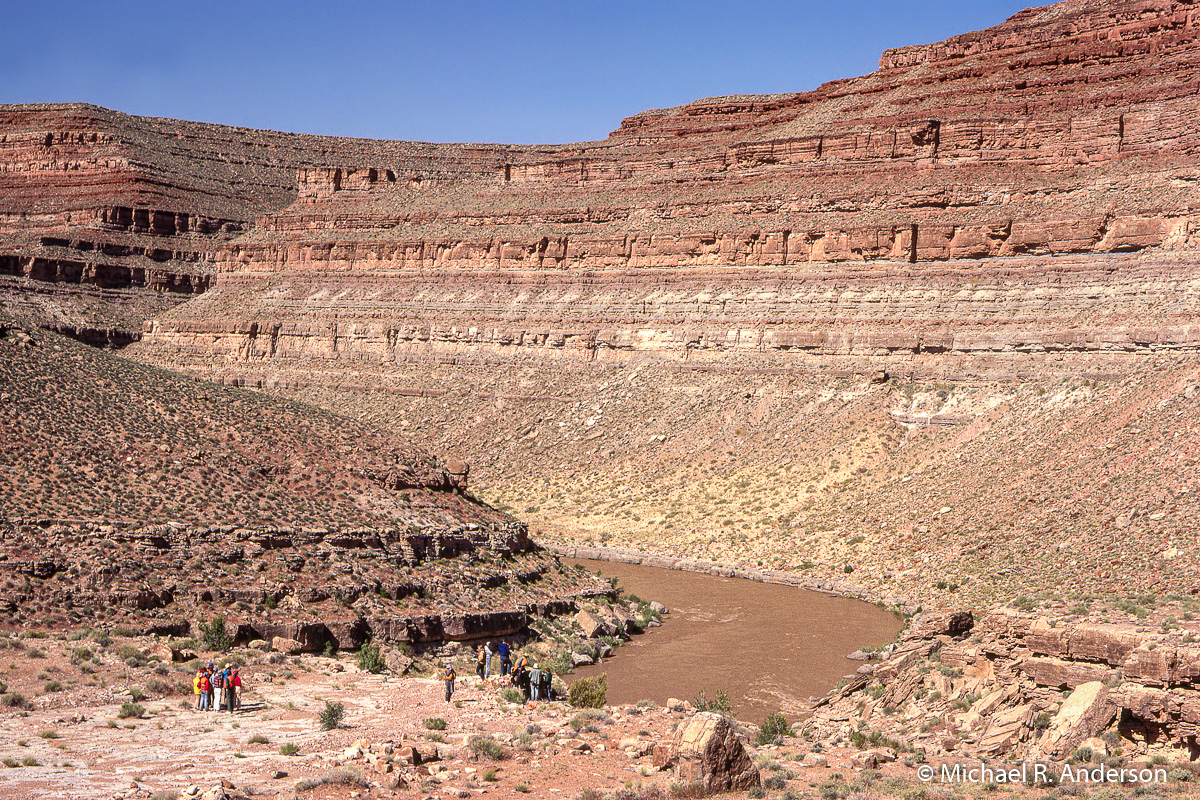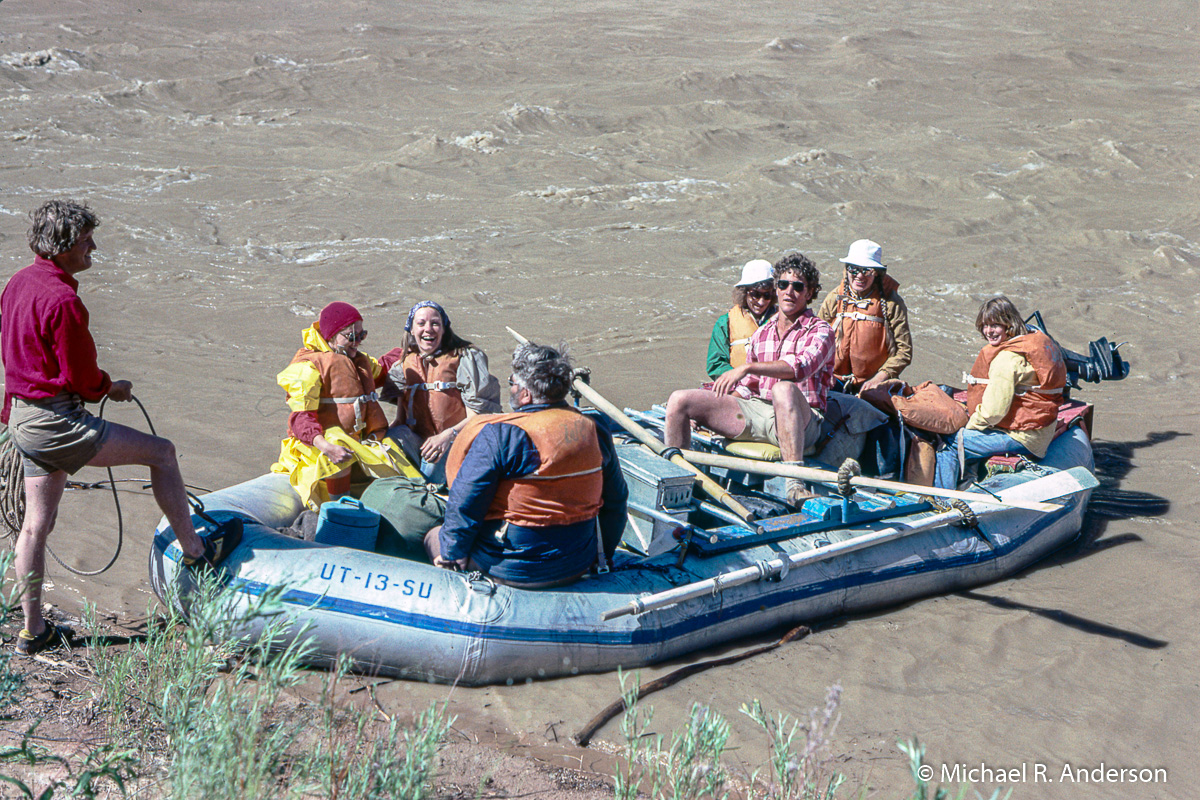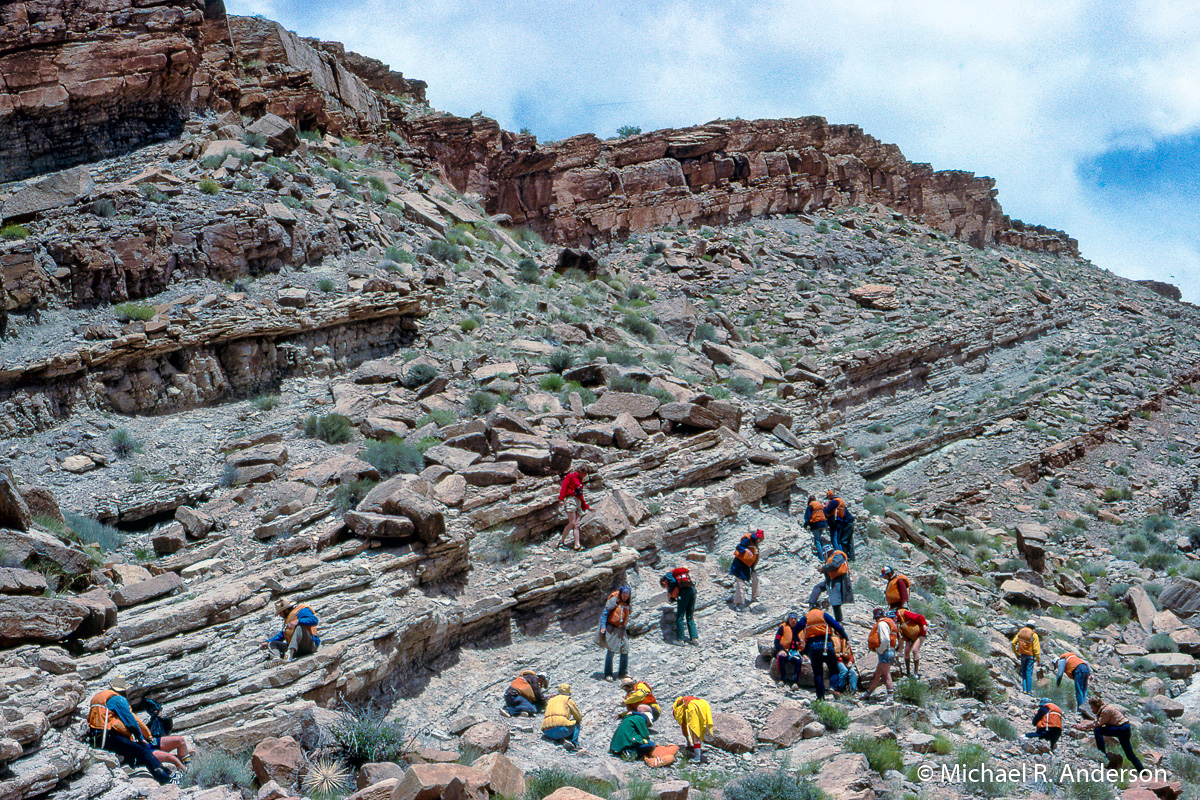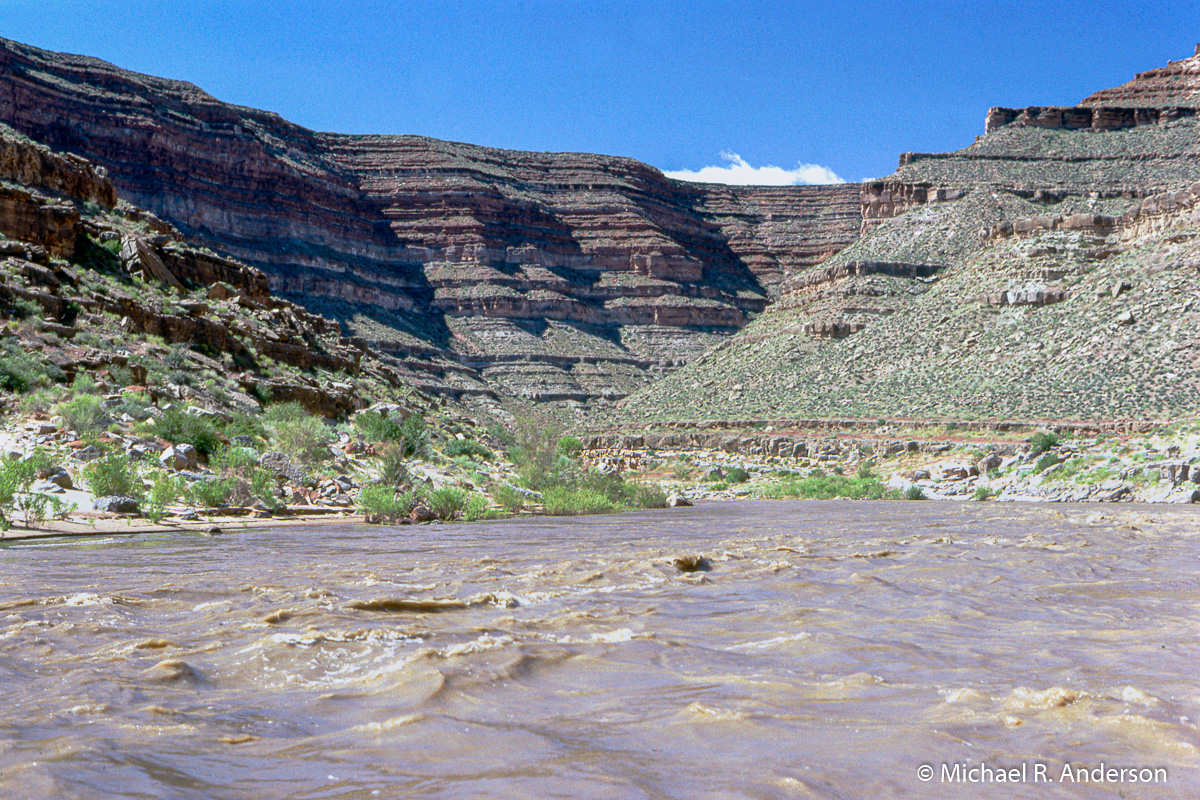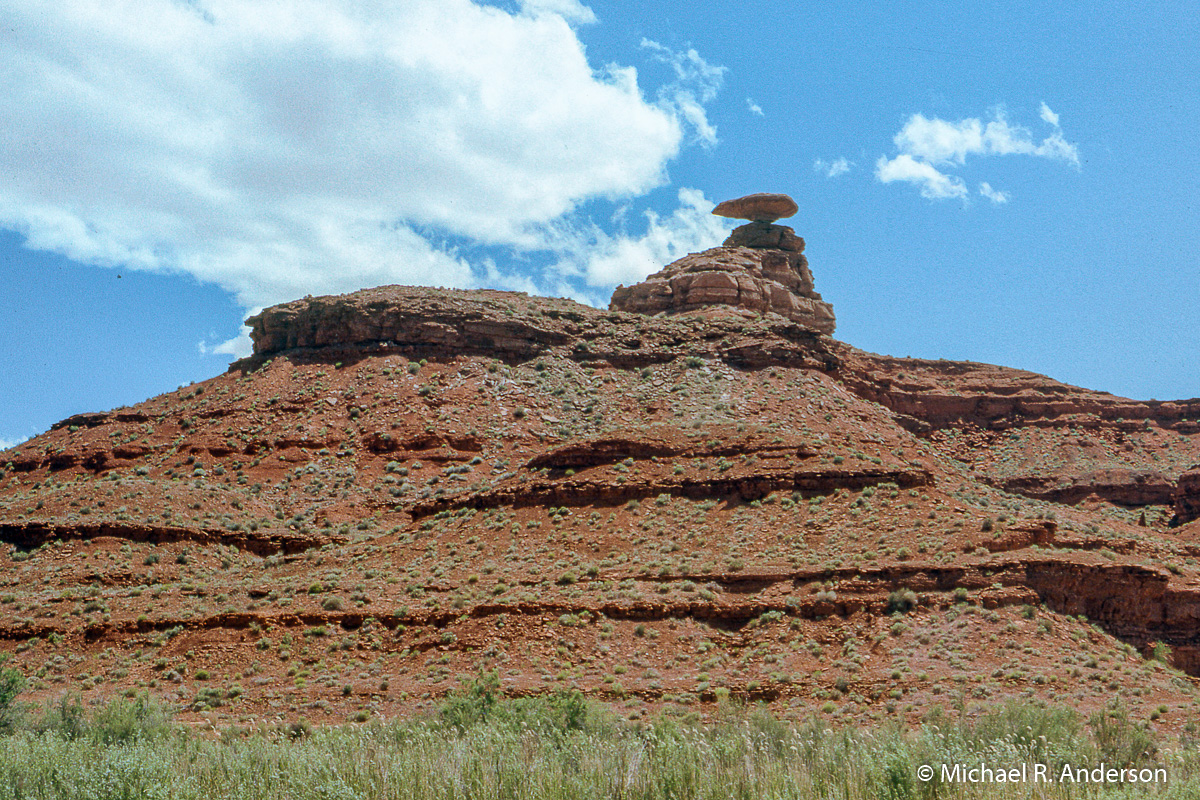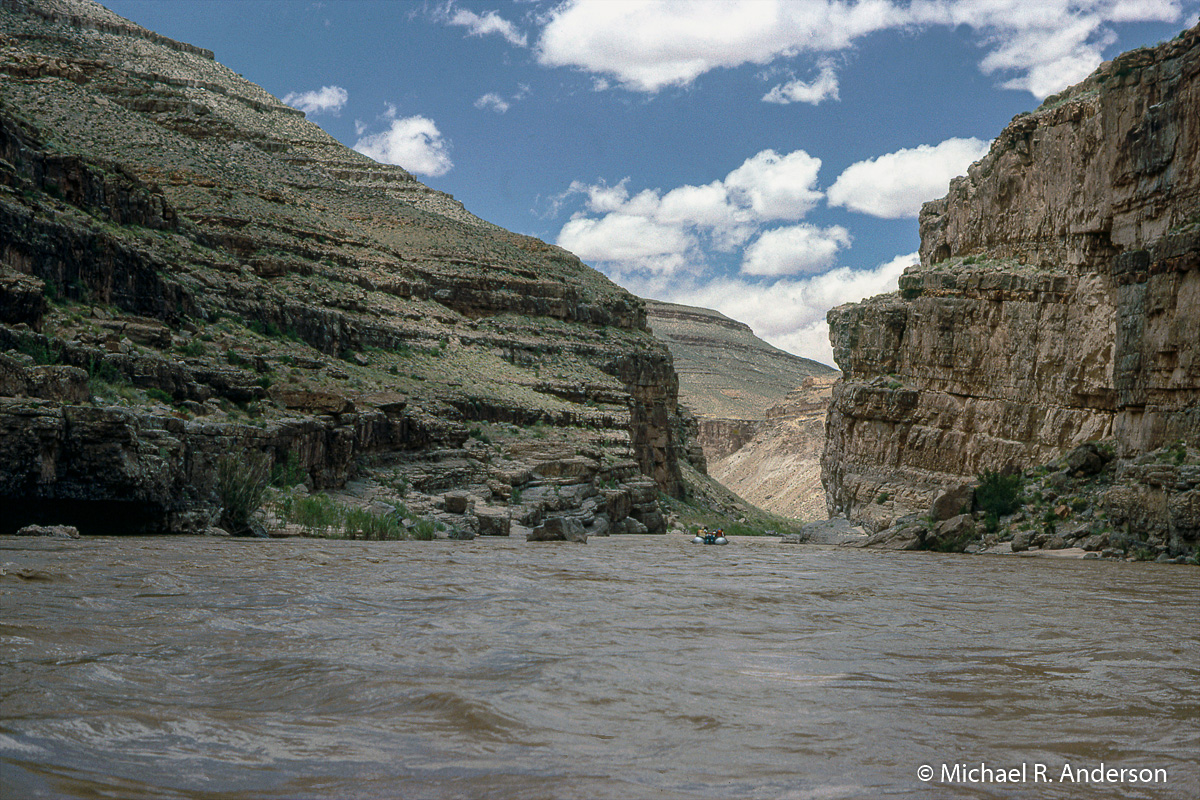I haven’t traveled in a while, so I dug out some photos from an old trip, a very old — no — a very, very old one.
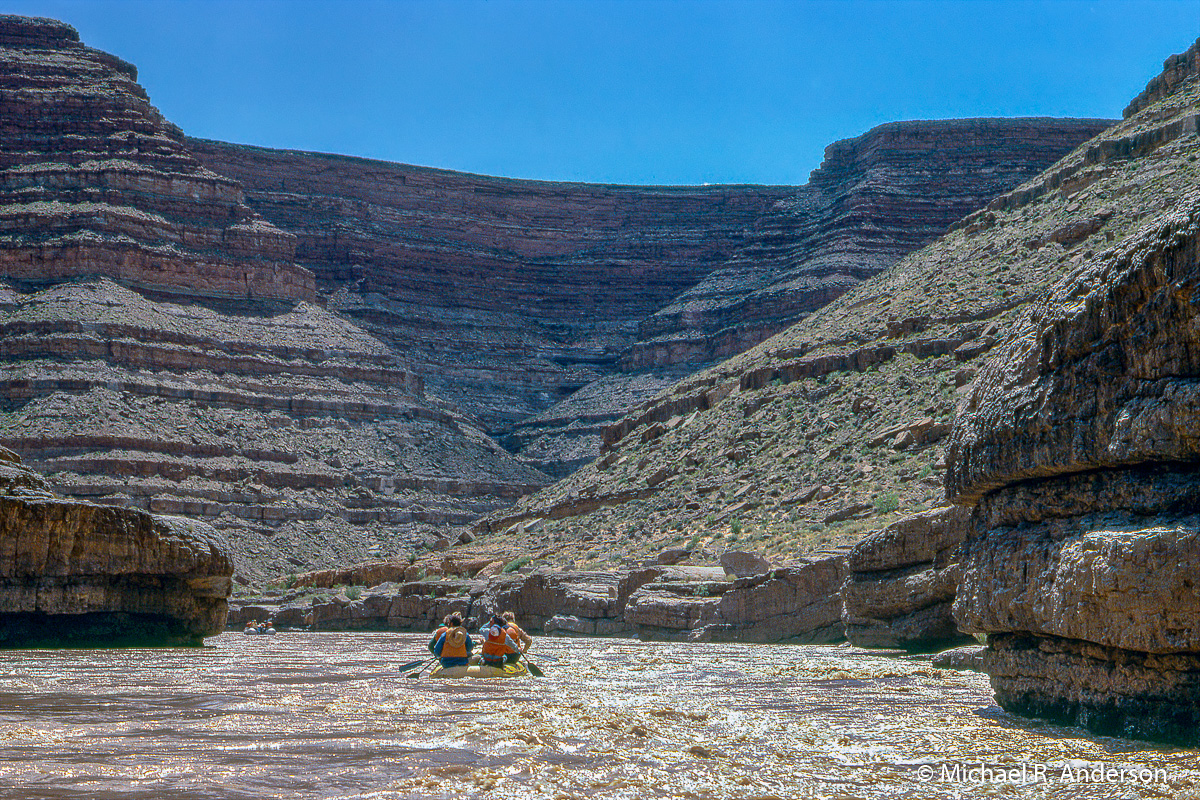
From 1977 – 1982, I taught chemistry at the University of Wisconsin-Parkside in Kenosha. While there, I enjoyed attending some of the lunch-hour presentations put on by the Geology Department. In 1980, they organized a field trip to the Colorado Plateau. Since they didn’t have enough faculty members to drive the vans necessary to transport the students, they asked if I’d like to join them as a driver. I did. On that trip we spent two days rafting the San Juan River from Bluff to Mexican Hat, Utah.
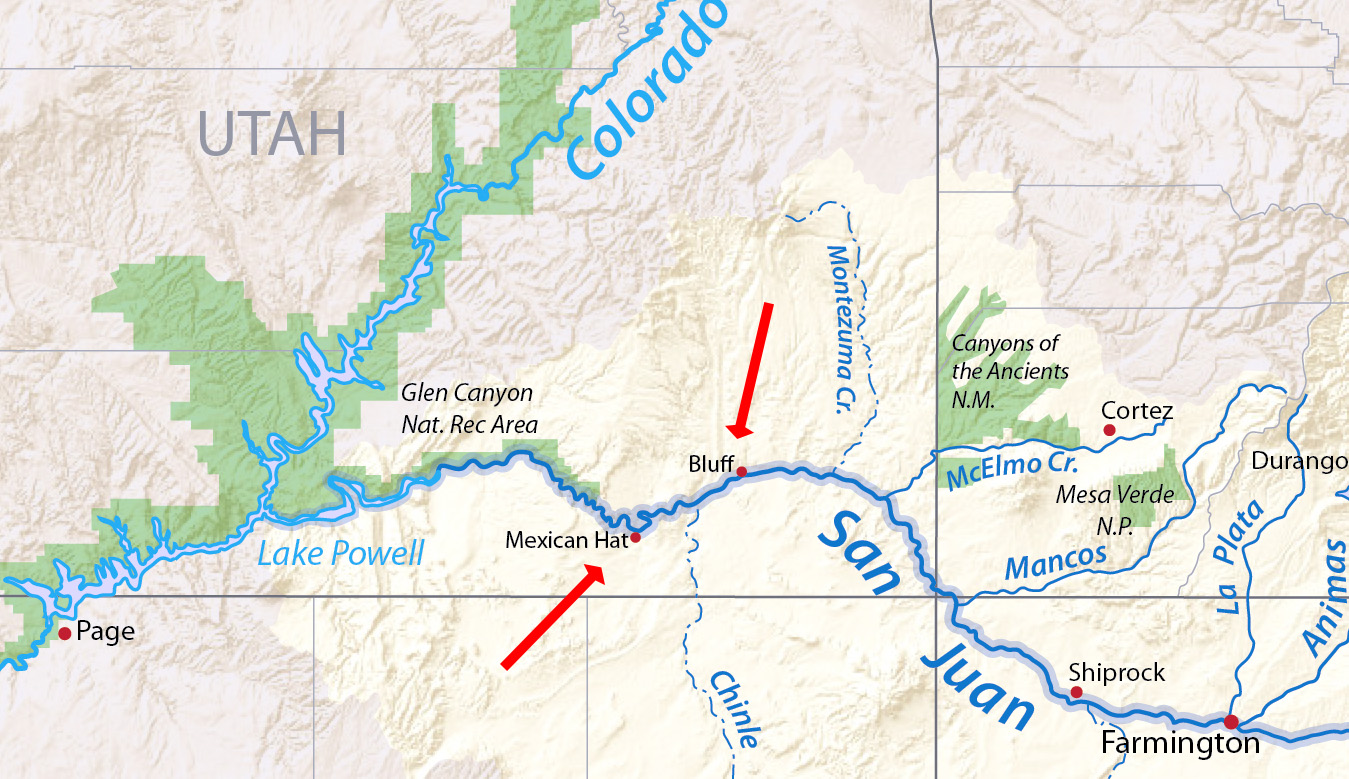
San Juan River Boating Adventures organized and operated the rafting trip. We traveled in several rafts. Some were small and were paddled by the occupants, though the current did most of the work. Others were larger and had oars manned by the company crew. I brought along a water-tight army surplus ammo can that I used to store my camera gear. It was painted silver to keep it cooler in the sun. The rafting company provided each of us with a sturdy rubber bag in which to store clothes and a sleeping bag. A large supply raft carried those bags along with all the cooking gear and food that they provided on the trip.
– – – – –
We started at a place called Sand Island Campground, three miles west of Bluff. This trip was more than just rafting. We often stopped along the way to hike and discuss the local geology as well as the history of the area. At one of our first stops we hiked to River House, an ancestral puebloan ruin from the thirteenth century. This 14-room dwelling is built in a sandstone alcove overlooking the river. We also passed some interesting rock art, the Kachina Petroglyph Panel, along the way. Being quite far from the nearest road, these are generally only reached by river.
– – – – –
As we continued down the river, the geology became more striking (at least to this nongeologist). The rock walls continued to rise higher. A huge wall of rock along the river rose up in a big curve. This is the Raplee monocline. We stopped and took a hike up Comb Ridge, part of the monocline, for a great view of the surrounding area. A few of us climbed to the top. After rafting another stretch of the river, we stopped late in the afternoon to set up camp. That was an easy job because we had no tents so it was just a matter of finding a place to unroll your sleeping bag. The best part was that the rafting crew set up all their cook gear and prepared a great meal for us.
The next day, after a filling breakfast, we continued down the river. It now flowed through the San Juan River Canyon. I thought that this was the most scenic part of the trip. No sign was needed, it clearly said “canyon.” As usual, we made several stops. On one stop we clambered up the rock walls to get a better view of the canyon-ensconced river. On another stop we all wandered around looking for fossils. Not being a paleontologist, I wouldn’t have recognized a fossil unless it looked like a T-Rex.When we saw the formation called Mexican Hat, we knew we were approaching the eponymous town where we would be taking out. I think everyone had a great time. All of the faculty survived. I’m not sure about the students since I forgot to count heads.
Some Infrequently Asked Questions
- What camera gear did you use? All the photos were taken with a Minolta SRT-101 using Kodachrome 64. The slides were scanned with an Epson Perfection V700 Photo Scanner.
- Was the trip expensive? The three-week trip cost about $300 per participant. The price was low, even for 1980, because we camped out and cooked our own meals most of the time. We were divided up into several smaller groups and rotated through the jobs of cooking and cleaning. One group prepared a big meal of spaghetti. Was the lack of tomato sauce a problem? Nope, they just poured a bottle of ranch dressing over it. It was apparently a western Italian recipe.
- What students were lucky (unlucky?) enough to ride with you? Here’s the whole gang, including me.
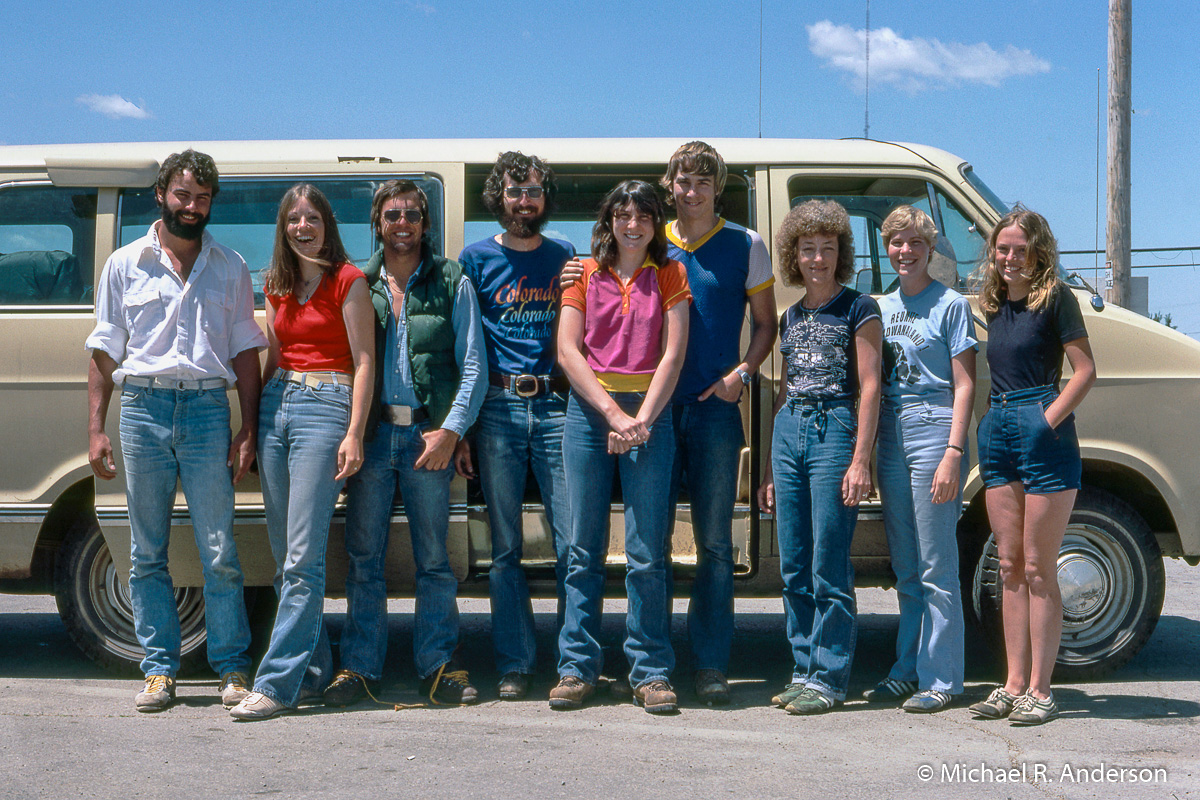
- Where are the pictures of big waves? This stretch of the San Juan River only has Class I (choppy and fun) and Class II (choppier but still fun if you like getting wet) water. When it got too choppy my paranoia made me stash my camera in my water-tight ammo can, which was tied to the raft.
- How did you remember all this stuff from forty years ago? My memory isn’t that good, so don’t be impressed. Using some meager photo notes from the trip, Google helped me find some long-lost names. If I misnamed something, please let me know.
